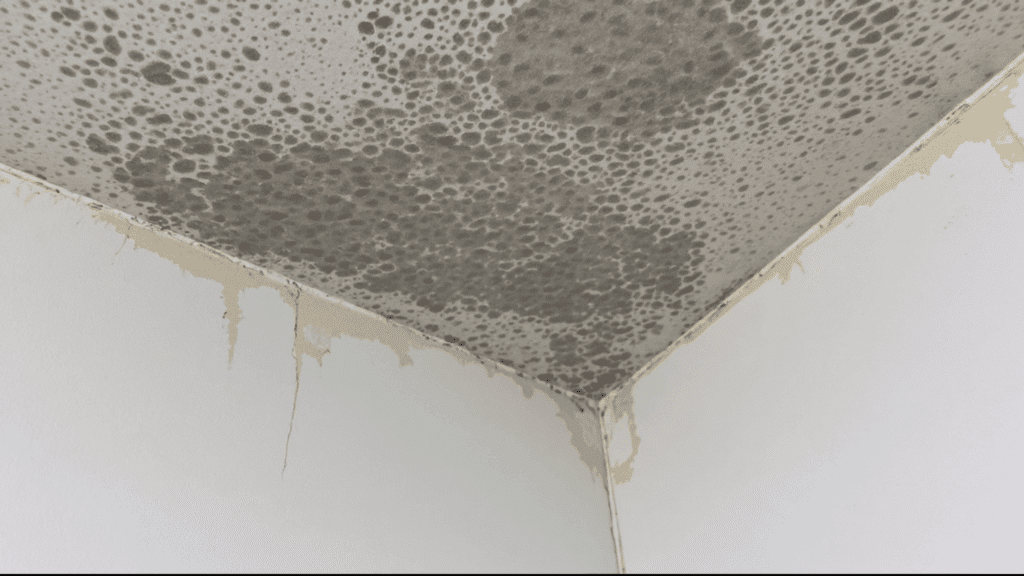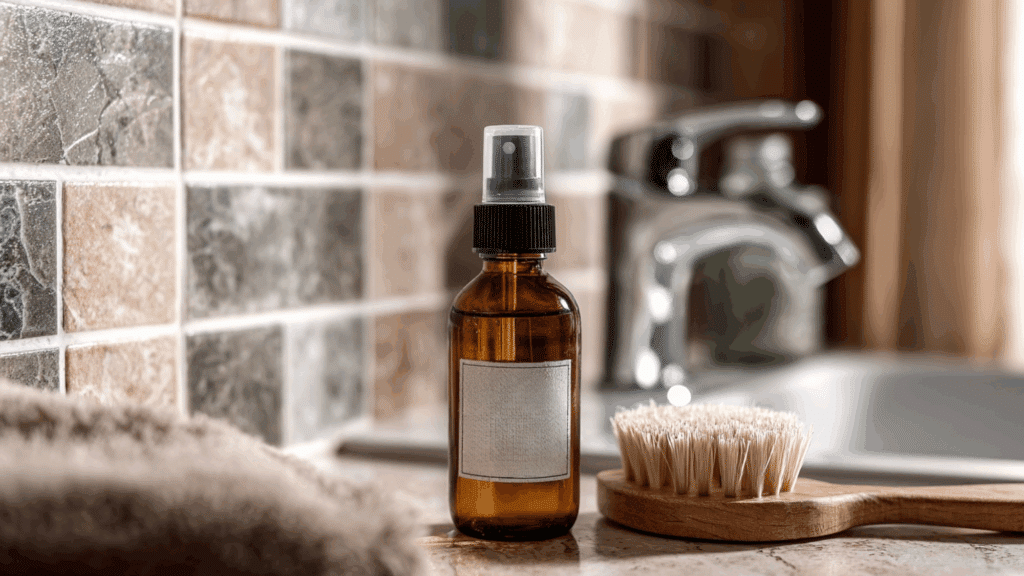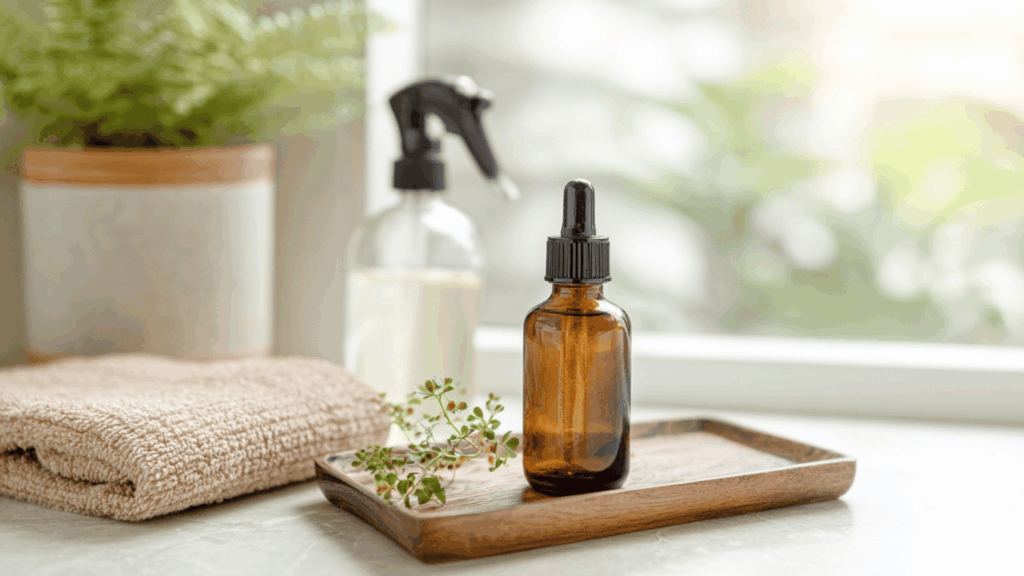That dark, stubborn grime creeping up shower tiles? It’s more than just an eyesore.
Mold and mildew thrive in damp bathrooms, and they can trigger allergies and respiratory issues for the whole family.
Most people scrub endlessly with harsh chemicals, but there’s a smarter way. With the right techniques and household ingredients, anyone can safely and effectively tackle shower mold.
This blog walks through proven methods to remove mold, prevent its return, and keep showers sparkling clean. Time to reclaim that bathroom.
How to Identify Mold or Mildew in Your Shower

Mold is a slimy fungus that penetrates deep into surfaces, causing structural damage over time. Mildew appears as powdery spots that remain on the surface and are simpler to clean away.
Spotting mold or mildew early helps prevent bigger problems. Here’s how to identify what’s growing in the shower.
- Check the color: Mold appears black, green, or red, while mildew looks white or gray.
- Feel the texture: Mold feels fuzzy or slimy to the touch. Mildew has a flat, powdery surface.
- Look at common spots: Inspect grout lines, corners, caulking, and showerheads where moisture collects.
- Sniff for musty odors: A strong, earthy smell often indicates mold growth hiding behind surfaces.
- Test with bleach: Dab a small amount on the spot. If it lightens quickly, it’s likely mildew. Mold takes longer to fade.
- Watch for spreading: Mildew stays surface-level, but mold penetrates deeper and spreads into porous materials.
- Check for water damage: Discolored or soft walls near the shower may signal mold growing underneath.
Effective Cleaning Methods for Mold or Mildew in the Shower
Different cleaning solutions work for different mold situations. These proven methods range from natural remedies to stronger commercial cleaners.
1. White Vinegar Solution

White vinegar is a natural mold killer that’s safe and effective. Pour undiluted vinegar into a spray bottle and saturate the moldy areas.
Let it sit for at least an hour without rinsing. The acetic acid breaks down mold structures and kills spores. Scrub with a brush, then rinse with water.
For stubborn spots, repeat the process or leave vinegar on overnight for deeper penetration.
2. Baking Soda Paste

Baking soda offers gentle scrubbing power plus natural deodorizing properties. Mix it with water to form a thick paste.
Apply the paste directly to mold or mildew spots and let it sit for 10 minutes. Scrub in circular motions with a brush or sponge.
The mild abrasive action lifts mold without scratching surfaces. Rinse thoroughly with warm water and wipe dry to prevent moisture buildup.
3. Hydrogen Peroxide Treatment

Hydrogen peroxide is a powerful antifungal and antibacterial agent. Use a 3% concentration and spray it directly on moldy areas.
Let it bubble and work for 10 to 15 minutes. The oxidizing action kills mold at the root level.
Scrub the area with a brush and rinse clean. This method works particularly well on porous surfaces like grout and caulking, where mold can dig deep.
4. Bleach Solution

Bleach kills mold quickly and whitens stained surfaces. Mix one cup of bleach with one gallon of water. Spray or apply the solution to affected areas and wait 10 minutes.
Never mix bleach with other cleaners, especially ammonia or vinegar. Scrub and rinse thoroughly.
Ensure good ventilation while working. Bleach works best on non-porous surfaces but can damage colored grout over time.
5. Tea Tree Oil Spray

Tea tree oil is a natural antifungal that prevents mold regrowth. Mix one teaspoon of tea tree oil with one cup of water in a spray bottle.
Shake well and spray on moldy areas. Don’t rinse it off—the oil continues working as it dries. The strong scent fades after a few hours.
Though pricier than other options, tea tree oil provides long-lasting protection against future mold.
6. Commercial Mold Removers

Store-bought mold removers contain powerful chemicals designed for tough jobs. Follow the product instructions carefully for best results.
Most require spraying, waiting several minutes, then scrubbing and rinsing. These products often work faster than natural solutions.
Choose formulas specifically designed for bathroom use. Always wear gloves and ensure proper ventilation when using commercial cleaners to avoid inhaling harsh fumes.
Health Risks of Mold or Mildew in Bathrooms
Mold and mildew pose real health threats, especially for vulnerable individuals in the home.
| Health Risk | Symptoms/Effects |
|---|---|
| Respiratory Problems | Coughing, wheezing, shortness of breath |
| Allergic Reactions | Sneezing, runny nose, red eyes, skin rashes |
| Asthma Attacks | More frequent and severe asthma episodes |
| Weakened Immunity | Higher risk of serious infections |
| Chronic Sinusitis | Persistent sinus inflammation, recurring infections |
| Headaches and Fatigue | Unexplained headaches, dizziness and constant tiredness |
| Lung Infections | Fungal infections in the lungs |
| Toxic Reactions | Neurological symptoms from black mold mycotoxins |
Preventive Tips for Mold and Mildew

Prevention beats cleanup every time. These simple habits keep mold and mildew from taking hold in the shower area.
- Improve ventilation: Run the exhaust fan during showers and for 30 minutes after. Open windows when possible to let fresh air circulate and reduce humidity levels.
- Wipe down surfaces: Squeegee shower walls and doors after each use. This removes standing water where mold spores love to settle and grow.
- Fix leaks promptly: Repair dripping faucets, loose caulking, and damaged grout immediately. Even small leaks create the damp conditions that mold needs to thrive.
- Use a dehumidifier: Keep bathroom humidity below 50% with a dehumidifier. This makes the environment less hospitable for mold and mildew growth.
- Clean regularly: Spray vinegar or a mild cleaner weekly to prevent buildup. Regular maintenance stops small spots from becoming major mold problems down the line.
When to Call a Professional for Mold Removal
Some mold situations are too big or dangerous to handle alone. If mold covers more than 10 square feet, it’s time to call in experts.
Black mold requires professional removal due to its toxic nature. Mold growing behind walls, under flooring, or in the HVAC system needs specialized equipment to access and eliminate.
When mold keeps returning despite repeated cleaning, there’s likely a hidden moisture problem only professionals can diagnose.
People with respiratory conditions or weakened immune systems shouldn’t attempt mold removal themselves.
Professionals have protective gear, industrial-strength cleaners, and the knowledge to safely remove mold. They also identify the root cause and prevent future growth.
Don’t risk health or property damage when the problem exceeds DIY capabilities.
To Conclude
Preventing mold and mildew in the shower doesn’t require expensive products or professional help in most cases.
Regular cleaning with vinegar, baking soda, or hydrogen peroxide does the job well.
The real secret lies in prevention; proper ventilation, wiping down wet surfaces, and fixing leaks make all the difference. These small daily habits stop mold before it starts.
A clean, mold-free shower isn’t just about appearances. It protects health, preserves bathroom surfaces, and creates a more pleasant space for everyone. Start implementing these strategies today.

